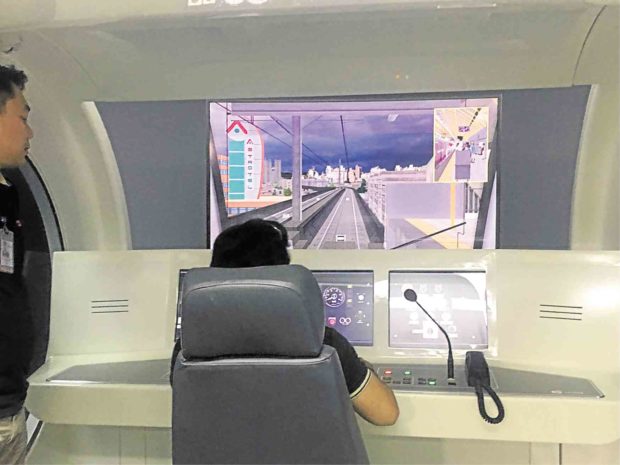
TRAINING IN 3DOne of the two simulator units at LRT2 Recto Station. —Krixia Subingsubing
The 3D visuals challenge them with up to 25 emergency scenarios, including those involving “jumpers.”
Train drivers of the Light Rail Transit 2 (LRT2) can now practice and raise their skill levels, thus improving passenger safety, using a P75-million simulator system recently acquired by the Light Rail Transit Authority (LRTA).
The upgrade is expected to significantly reduce the cost of training drivers on the 13.8-km line.
Prior to the installation of the new system, drivers undergoing a monthlong course had to spend two weeks practicing on empty trains, usually at night when the stations are closed, according to Felix Leyson, LRTA manager for operations.
Those nightly runs had added to the LRT2’s power expenditures without generating revenue, Leyson noted.
LRTA administrator Reynaldo Barroya said the simulator—manufactured by the Spain-based Lander Simulations and Training Solutions—was the first of its kind in the country and could help ensure the safety of passengers while shortening the training period for the drivers.
Two simulator units were formally unveiled on Wednesday in a room at the LRT2 Recto Station in Manila.
The simulator projects a 3D reproduction of the topography of the LRT2 line as seen from the driver’s seat, including the signaling features, stations and the Metro Manila cityscape as backdrop.
The program sets up the driver-trainees for 25 “most frequent fault occurrences” requiring quick mechanical adjustments or immediate troubleshooting.
These include emergency stops, power outages, extreme weather conditions, and when a person is accidentally pushed or deliberately jumps into the path of a moving train.
Compared to LRT1 and the Metro Rail Transit (MRT3), LRT2 is considered the least busy, with a daily ridership of about 200,000.